AXITOL
Vitamin B5, Inositol, A-lipoic Acid, Amino Acids, Antioxidants
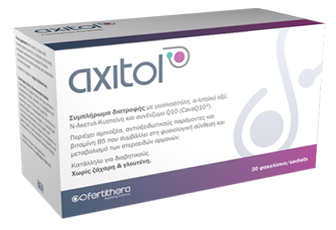
Nutraceuticals to address PCOS & male/female infertility
Coenzyme Q10
Coenzyme Q 10, aka Co Q 10, but also known as ubiquinone, is a fat-soluble, vitamin-like compound that naturally occurs in most cells of the body, primarily in the mitochondria. Co Q 10 is needed for the basic function of cells and is the source of energy for the mitochondria. Mitochondria are the organelles inside cells that generate energy for the cell in the form of adenosine triphosphate (ATP), the primary source of energy in human physiology. Co Q 10 functions as a lipid-soluble antioxidant, providing protection against free radical damage within mitochondria.
It is well known that the chances for women conceiving begin to decline around the age of thirty. It is felt that the major reason for this phenomenon is a decline in oocyte quality, probably on the basis of chromosomal abnormalities.
One concept is that the decline in oocyte quality could be associated with a decrease in mitochondrial activity. The same cause can be associated with reduced volume and quality in sperm for men and consequent male infertility.
Supplements such as Co Q 10 could increase mitochondrial activity and serve as a potent antioxidant, causing the ovary and testes to perform better, allowing higher pregnancy rates with lower risk of pregnancy loss.
Related references:
J Assist Reprod Genet. 2013 Sep; 30(9): 1147–1156
Antioxidants (Basel) 2021 Aug; 10(8): 1325.
Aging Cell. 2015 Oct; 14(5): 887–895
Cochrane Database Syst Rev. 2020 Aug; 2020(8): CD007807
Antioxidants (Basel) 2019 Mar; 8(3): 58
Cochrane Database Syst Rev. 2017 Jul; 2017(7): CD007807
JBRA Assist Reprod. 2020 Jul-Sep; 24(3): 283–288
In Total 1297 citations in PMC

N – Acetylcysteine
N-acetylcysteine (NAC) is the supplement form of the amino acid cysteine.
The most accepted MoA is that NAC is used by cells to create glutathione. NAC also bonds with two other amino acids—glutamine and glycine. NAC plays essential roles, including:
- Regulating cellular activities
- Neutralizing free radicals that damage cells and tissues
- Provide better control of PCOS by increasing insulin sensitivity. NAC may help treat PCOS, according to a 2015 systematic review in Obstetrics and Gynecology International. In evaluating eight studies with a total of 910 women with PCOS, the investigators found that NAC improved ovulation and pregnancy rates compared to a placebo. Moreover, in another study NAC had better improvement in clinical, biochemical and hormonal profile than Metformin in PCOS patients
NAC also improves fertility in men. According to a 2016 study in the International Journal of Fertility and Sterility, people who underwent surgery to treat varicoceles had higher conception rates if they took NAC before and after surgery. Moreover, the quality of sperm improved substantially. In the Cohrane review of 2019 was one of the supplements that showed the strongest evidence of improving male subfertility.
Related references:
Obstet Gynecol Int. 2015;2015:817849
Int J Fertil Steril. 2016 Apr-Jun;10(1):120-6.
J Obstet Gynaecol India. 2019 Feb; 69(1): 77–81.
J Nutr Metab. 2021; 2021: 9949453
Cochrane Database Syst Rev. 2019 Mar; 2019(3)
In Total 528 citations in PMC
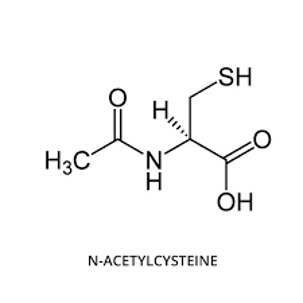
The alpha lipoic acid is present in AXITOL in coated form (coated lipoic acid) to provide a controlled and gradual release in a period of from 0 to 4 hours (best bioavailability among A Lipoic Acid Forms).
A – Lipoic Acid
Lipoic acid (LA) is an antioxidant able to produce its effects in aqueous or lipophilic environments. Lipoate is the conjugate base of lipoic acid, and the most prevalent form of LA under physiological conditions. It presents a highly negative reduction potential, increases the expression of antioxidant enzymes and participates in the recycling of vitamins C and E. Due to these properties, LA is called the “universal antioxidant”.
In fertility: numerus RCTs have proven the positive effect of a-lipoic acid on fertility issues either combined with PCOS or not in women but also in men (semen quality/quantity).
Daily dose of 600mg.
Related references:
Medicine (Baltimore) 2020 Jul 24; 99(30): e20696
Medicine (Baltimore) 2019 Dec; 98(51): e18453
Int Braz J Urol. 2019 Jul-Aug; 45(4): 815–824
Poult Sci. 2021 Feb; 100(2): 1221–1238
J Assist Reprod Genet. 2012 Feb; 29(2): 175–183
Biology (Basel) 2021 Mar; 10(3): 241
Int J Fertil Steril. 2016 Jan-Mar; 9(4): 442–451.
Antioxidants (Basel) 2021 Oct; 10(10): 1534
Fertil Steril. 2015 Aug;104(2):318-24.
In Total 528 citations in PMC
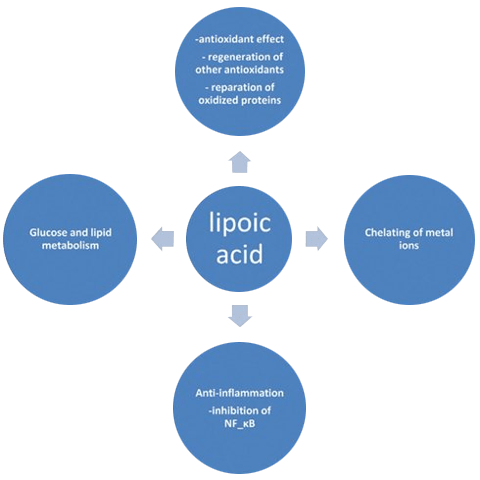
L – Carnitine & L – Arginine
> L-Arginine
Taking L-Arginine can benefit both male and female fertility and is often recommended for couples trying to conceive. It is instrumental in helping the body produce Nitric Oxide, which promotes blood flow to the genitalia and ovaries.
Not only is L-Arginine generally accepted as a libido booster for women but is also used to naturally improve the sexual functioning in men. Regarding any direct effect on efforts to conceive, L-arginine is capable of increasing both the amount and motility of sperm. For women, L-Arginine can increase cervical mucus.
> L-carnitine
Is a nutrient and dietary supplement. It plays a crucial role in the production of energy by transporting fatty acids into mitochondria. The mitochondria act as engines within cells, burning these fats to create usable energy.
L-Carnitine has its applications in improving female fertility, mainly through amelioration of the energy supply to the cells. These beneficial effects show great promise in its application as a treatment option for women facing infertility disorders.
L-Carnitine (LC) is highly concentrated in the epididymis and plays a crucial role in sperm metabolism and maturation. It is related to sperm motility and has antioxidant properties.
“…According to the results, it appears that treatment with L-carnitine may have improved the hormonal and metabolic parameters of women with PCOS…”
Related references:
Nutr Res 2020 Oct;82:67-73.
Cochrane Database Syst Rev. 2020 Aug; 2020(8): CD007807
Adv Nutr. 2019 Sep; 10(5): 765–777
J Endocrinol Invest 2009 Dec; 32(11):870-2
JBRA Assist Reprod. 2019 Oct-Dec; 23(4): 392–395
Reprod Biol Endocrinol. 2018; 16: 5.
RBMO REVIEW| VOLUME 8, ISSUE 4, P376-384, JANUARY 01, 2004
JBRA Assist Reprod. 2019 Oct-Dec; 23(4): 392–395
In Total 61.371 citations in PMC
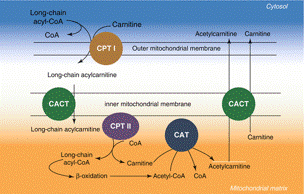
Pantothenic Acid (Vitamin B5)
EFSA: Scientific Opinion on the substantiation of health claims related to pantothenic acid and energy-yielding metabolism (ID 56, 59, 60, 64, 171, 172, 208), mental performance (ID 57), maintenance of bone (ID 61), maintenance of teeth (ID 61), maintenance of hair (ID 61), maintenance of skin (ID 61), maintenance of nails (ID 61) and synthesis and metabolism of steroid Hormones.
Pantothenic acid (also known as vitamin B5) is an essential nutrient that is naturally present in some foods, added to others, and available as a dietary supplement. The main function of this water-soluble B vitamin is in the synthesis of coenzyme A (CoA) and acyl carrier protein.
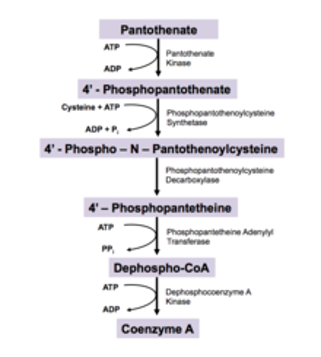
Myo-Inositol
Myo-inositol (MI) supplementation in women with polycystic ovary syndrome (PCOS) has been evaluated over the last years. Many hormonal and reproductive impairments associated with this disorder seem relieved by the supplement.
Inositol supplement improves clinical pregnancy rate in infertile women undergoing ovulation induction for ICSI or IVF-ET
“…Also, there was a significant improvement in the progressive sperm motility after treatment by Myo-inositol. This therapeutic method increased the fertility rate in the patients whose sperms were incubated with Myo-inositol by up to 18%, which was about twice greater than those who did not receive the drug…”
Related references:
Medicine (Baltimore). 2017 Dec; 96(49): e8842.
JBRA Assist Reprod. 2019 Oct-Dec; 23(4): 392–395
Cochrane Database Syst Rev. 2018 Dec; 2018(12): CD012378
Int J Reprod Biomed (Yazd). 2019 Oct; 17(10): 749–756.
In Total 104.525 citations in PMC
> The D-chiro-inositol paradox in the ovary
Unlike tissues such as muscle and liver, ovaries never become insulin resistant. Therefore, we could speculate that PCOS patients with hyperinsulinemia likely present an enhanced MI to DCI epimerization in the ovary; this would result in an increased DCI/MI ratio (i.e., overproduction of DCI), which in turn would lead to an MI deficiency in the ovary. This MI depletion could eventually be responsible for the poor oocyte quality observed in these patients.
Furthermore, because MI supplementation reduces the rFSH IU administrated during IVF cycles, it is likely that the putative MI deficiency in the ovary would also impair the FSH signaling, resulting in an increased risk of ovarian hyperstimulation syndrome for PCOS patients.
Therefore, we could speak of a “DCI paradox”: indeed, although DCI is useful in the treatment of PCOS patients to reduce IR, it has no effect at ovarian level.
Related references:
Fertil Steril 2011 Jun 30;95(8):2515-6. doi: 10.1016/j.fertnstert.2011.05.027. Epub 2011 Jun 8
Gynecol Obstet Invest. 2010; 69: 197-202
Fertil Steril. 2009; 91: 1750-1754
Eur Rev Med Pharmacol Sci. 2011; 15: 452-457
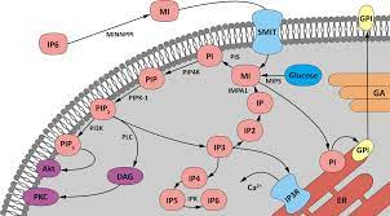
The ally for your fertility
Men can be infertile too. In fact, men and women are equally likely to have fertility problems. According to the Office on Women’s Health Trusted Source, about one-third of infertility cases can be attributed to female infertility while men’s problems account for another third of infertility cases.
The remaining third of cases may be caused by a combination of male and female infertility, or they may have no known cause.
Irregular periods. Infrequent, irregular or prolonged menstrual cycles are the most common sign of PCOS. For example, you might have fewer than nine periods a year, more than 35 days between periods and abnormally heavy periods.
Excess androgen. Elevated levels of male hormones may result in physical signs, such as excess facial and body hair (hirsutism), and occasionally severe acne and male-pattern baldness.
Polycystic ovaries. Your ovaries might be enlarged and contain follicles that surround the eggs. As a result, the ovaries might fail to function regularly.

Active Ingredients *
Myoinositol1.000 mg
N-Acetylcysteine250 mg
L-Carnitine fumarate250 mg
L-Arginine250 mg
A-Lipoic Acid (coated 70%)428 mg
Co-enzyme Q10 (CAVAQ10)125 mg (450 mg)
Pantothenic acid (Vitam. B5)3 mg
Recommended Intake: 2 sachets per day or as recommended by your health care professional. Mix well the content of the sachet in a glass of water or juice and drink. The content is not necessary to be fully dissolved during the mixing.
* All active ingredients come from EU – GMP manufacturers
Warning: Food supplements should not be used as a substitute for a balanced diet. Do not exceed the recommended daily dose. This product is not intended to prevent, treat, or cure any human disease. Consult your doctor if you are pregnant, nursing, taking any medication or have a medical condition. Keep out of reach of small children, in a dry and cool place.
«Fertithera Labs’ mission is to experiment, research and produce innovative products, based on the latest clinical medical trials and scientific developments.
Applying Science is our way of dealing with numerous health conditions always in combination with your health practitioner’s instructions.
With our unique and revolutionary food supplements, we seek to upgrade the quality of life for people worldwide, as well as promote longevity and wellbeing.
Our product’s ingredients come only from GMP manufacturers guaranteeing the best quality and are manufactured according to full GMP compliance, tested in process and at release, and confirmed by stability programs.
Fertithera Labs’ products provide dietary tools to supplement diets with substances normally contained in foods. However, they should not be used as a substitute for a balanced diet and healthy lifestyle»



